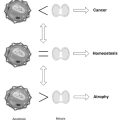Chapter 26 Rapid Dark Adaptation Test
 Introduction
Introduction
A rapid dark adaptation test (RDAT) was described by Thornton1 and evaluated by Vinton and Russell.2 This rapid (6 minutes) test has significant clinical utility. The basis for the test is the measurement of the time of the so-called Purkinje shift. This term refers to the shifting of peak retinal wavelength sensitivity from the red toward the blue end of the visual spectrum during the transition from day (cone-mediated) vision to night (rod-mediated) vision. When color vision is nonfunctional, this shift causes the intensity, not the color, of blue to appear brighter than red under dim lighting.
 Clinical Application
Clinical Application
Although dark adaptation testing has the advantage of being an in vivo test, and therefore directly related to function, it is somewhat less specific. Box 26-1 lists conditions that may give abnormal dark adaptation results with a normal vitamin A status.
 Procedure
Procedure
Equipment and Supplies
• A standard darkroom light fixture fitted with a 7.5 W bulb and a neutral-density filter (allowing 1% transmittance). The bottom of the fixture is suspended 1.2 m above the work surface, so that the target brightness on the work area is approximately 0.0068 candela/m2.
• Munsell color disks with matte finish: five white disks (N9.5/-), six blue disks (5PB5/10), and seven red disks (5R5/10) (available from Munsell Color and Macbeth Division, Baltimore, Md.)
Method
1. The procedure is explained to the subject.
2. The subject’s vision is light-adapted by fixation on a standard x-ray viewbox for 1 minute at a distance of 0.5 meters. The x-ray viewbox is then turned off (the darkroom light remains on).
3. The subject is given all 18 disks mixed in random order, and the stopwatch is started.
4. The subject separates the white and then the blue disks as fast as possible. Under these controlled lighting conditions, the subject will not be able to recognize the colors, because the cones cannot distinguish color with the limited light available. The ability to separate the disks by brightness therefore depends on the rods. Any disk mistakenly separated by the subject is returned to the original pile until 100% accuracy of sorting is achieved, at which point the stopwatch is stopped and the time is recorded as the result.
5. The first test performed by a subject should be redone to allow for learning and standardization.


